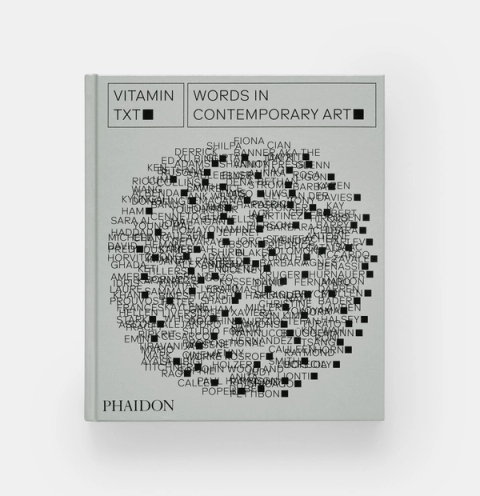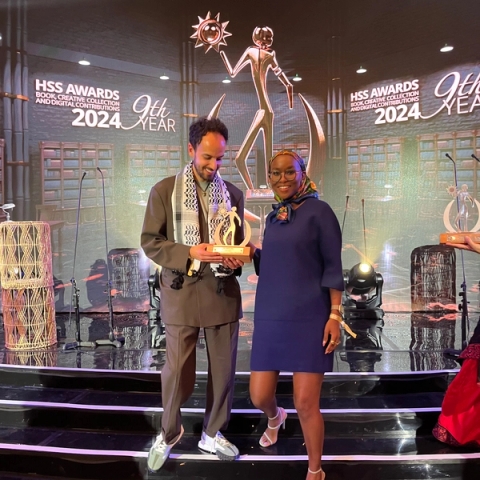My Enquiry (0)
No artwork has been selected.
Please choose an artwork to enquire.
Enquiry Submitted
Thank you for your enquiry and interest in our artists’ work. A member of the gallery team will respond shortly.
000%

Kamyar Bineshtarigh wins National Institute for the Humanities and Social Sciences award and features in 'Vitamin Txt'
3 Apr 2024 (2 min) read
Artist Kamyar Bineshtarigh was awarded the Best Emerging Artist/Curator Award, a Humanities and Social Sciences (HSS) Award presented by the National Institute for the Humanities and Social Sciences (NIHSS).
Bineshtarigh is also one of 103 living artists from 34 different countries included in Phaidon’s Vitamin Txt: Words in Contemporary Art, a global survey of today’s most innovative artists working with text.
HSS AWARD
The annual HSS Awards honour outstanding works of literature and the arts, recognising those “undertaking the necessary work of creating post-Apartheid and postcolonial forms of scholarship, creative production and digital humanities outputs, highlighting the profound societal impact of the humanities and social sciences and their capacity to shape our world”. Bineshtarigh won for his 2021 debut solo exhibition at the Goethe-Institut Johannesburg titled koples boek(e). He shares this award with curator of the exhibition Amogelang Maledu, both of whom accepted the award in person in Pretoria last month.
koples boek(e) engages with the practice of remembrance as it reflects on the complex history of Arabic-Afrikaans – straddling between the politics and poetics of the language. The exhibition invited viewers to ponder on the ingenuity of the language’s invention: from its resistance to its survival and ultimately, the precarity of its (mis)communication and subsequent systematic erasure.

VITAMIN TXT: WORDS IN CONTEMPORARY ART
Since the release of Vitamin P: New Perspectives in Painting in 2002, Phaidon has published 11 books in the Vitamin series, all featuring the most innovative work by living artists working within a specific medium or material.
Thoughtfully nominated by an esteemed panel of curators, academics, writers and critics, each of the featured artists place the use of text centrally within their artistic practices. The over 500 artworks featured in Vitamin Txt are as varied as the book's artists, encompassing a broad spectrum of visual experimentation. Whether working with paint, textiles, printmaking, or sculpture, these artists exemplify text’s potency and limitless possibilities across several media.
An introduction by Evan Moffitt contextualises the relationship between text and art. “From the moment ancient Sumerians used the image of an ox to represent a sound, text and image have served related semiotic functions. How, then, in our contemporary era, did we come to consider them so separable?” Moffitt’s answer traverses time and place, tracing the history of text in art from illuminated manuscripts, painted mosque tiles, and ancient Chinese calligraphy all the way to contemporary digital art.
Since the 20th century, text has proven itself as a revolutionary creative imperative. Artists such as Pablo Picasso, Georges Braque, and Hannah Höch saw text’s potential to challenge traditional categories of art, most prominently by incorporating newsprint into paintings and collages as a way of capturing the spirit of modern life. The artists in Vitamin Txt expand upon these legacies, positioning words as integral components of their artwork while also considering the inherent readability of words to communicate ideas – sometimes for social or political purposes, and at other times to explore the aesthetic qualities of letters and typography.
Equal parts depth and style, Vitamin Txt is a diverse visual feast with a distinct thematic focus. Like its subject, this is a book that surprises and subverts, providing a cross-disciplinary view into today’s art world.
Other featured artists alongside Bineshtarigh include Ghada Amer, Tracey Emin, Hardland Miller, Judy Chicago, Xu Bing, Sophie Calle, Ichihara Hiroki, Ed Ruscha and others.

